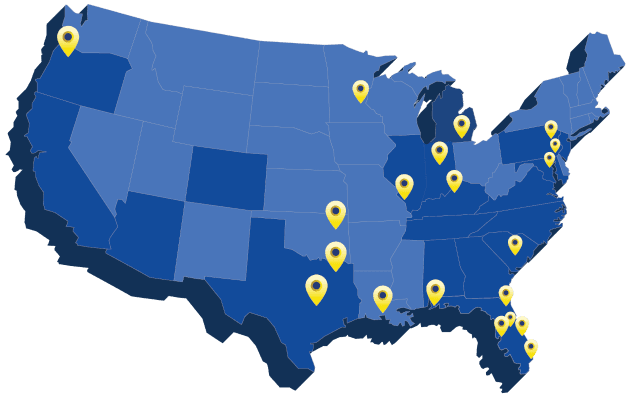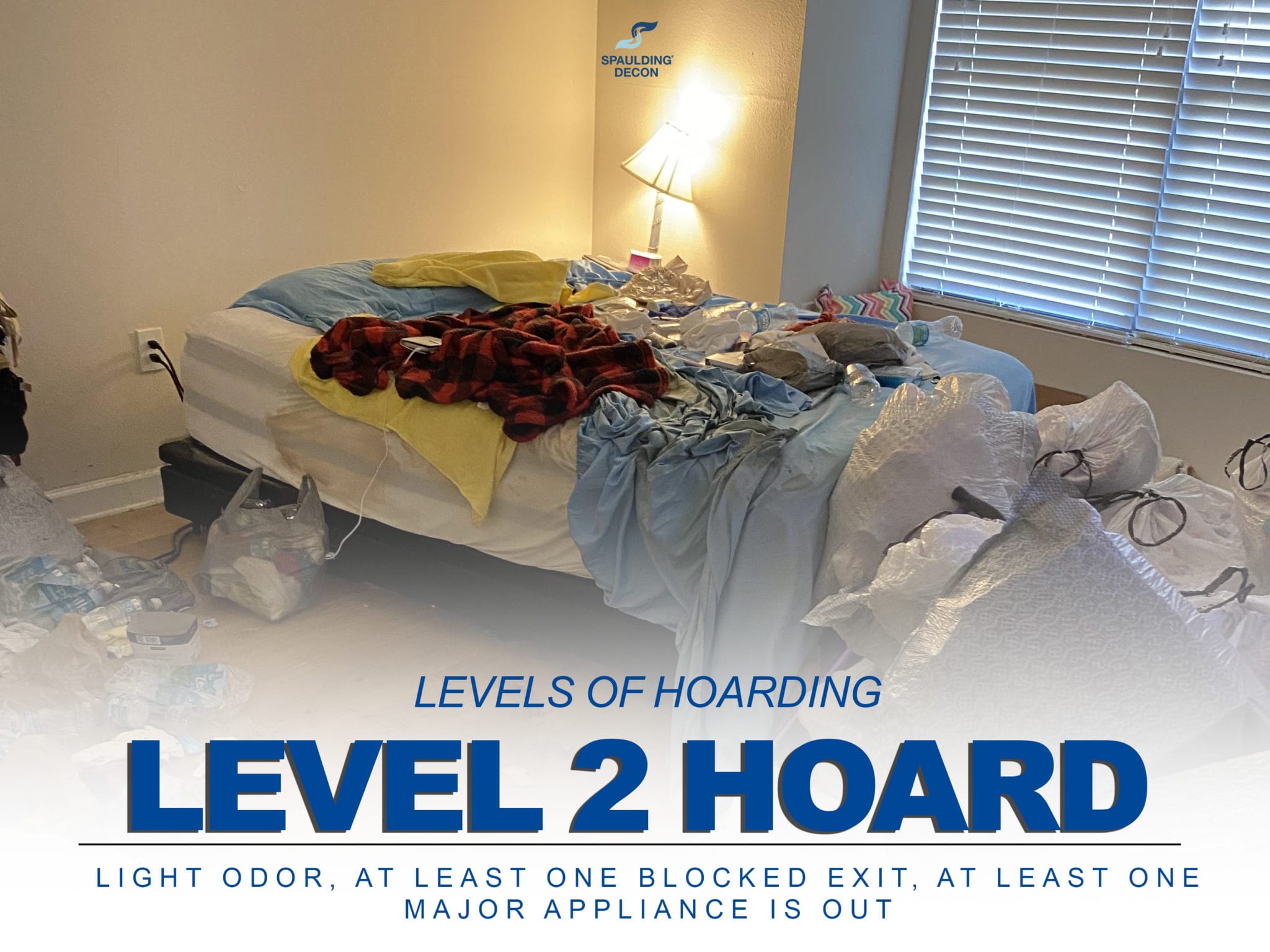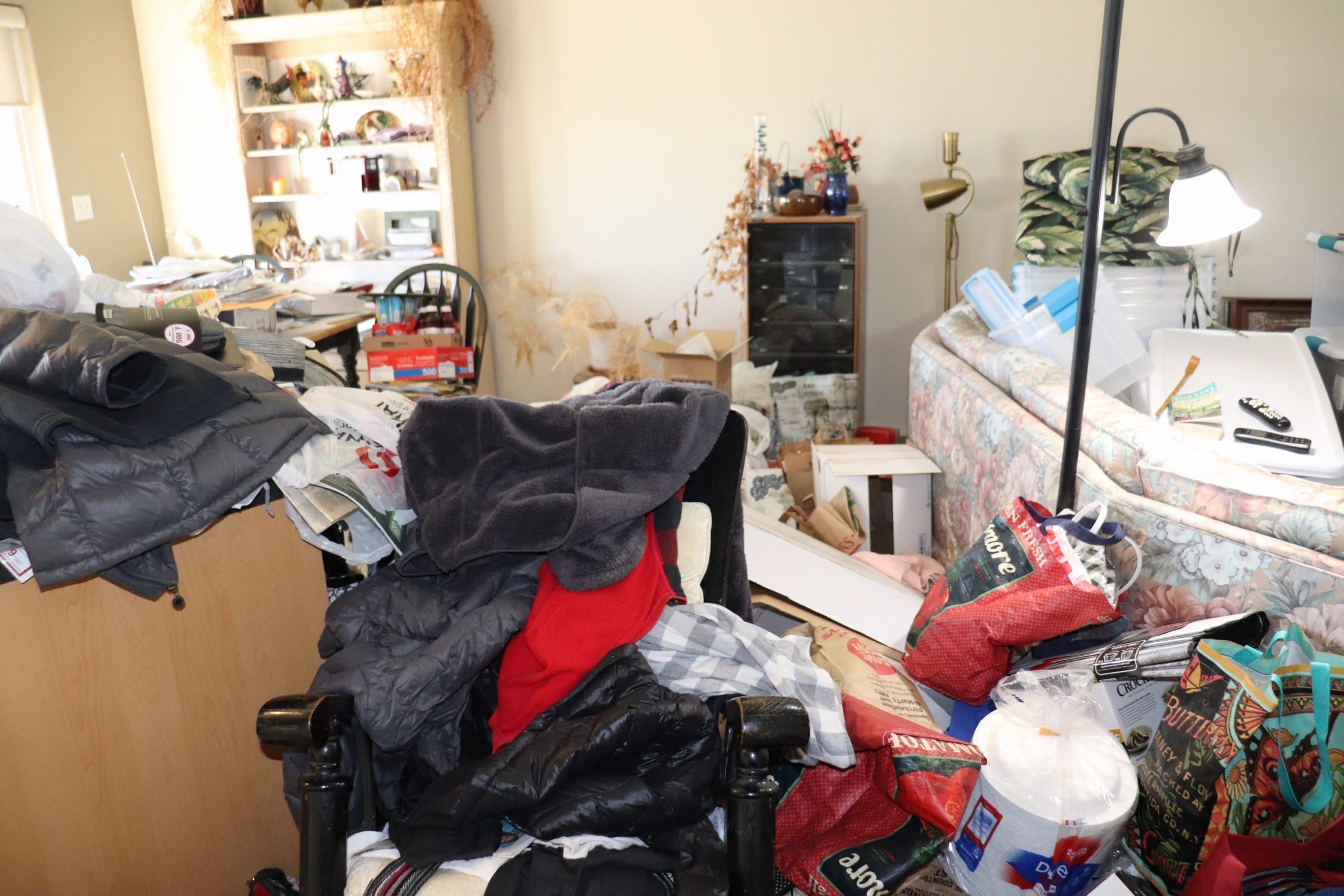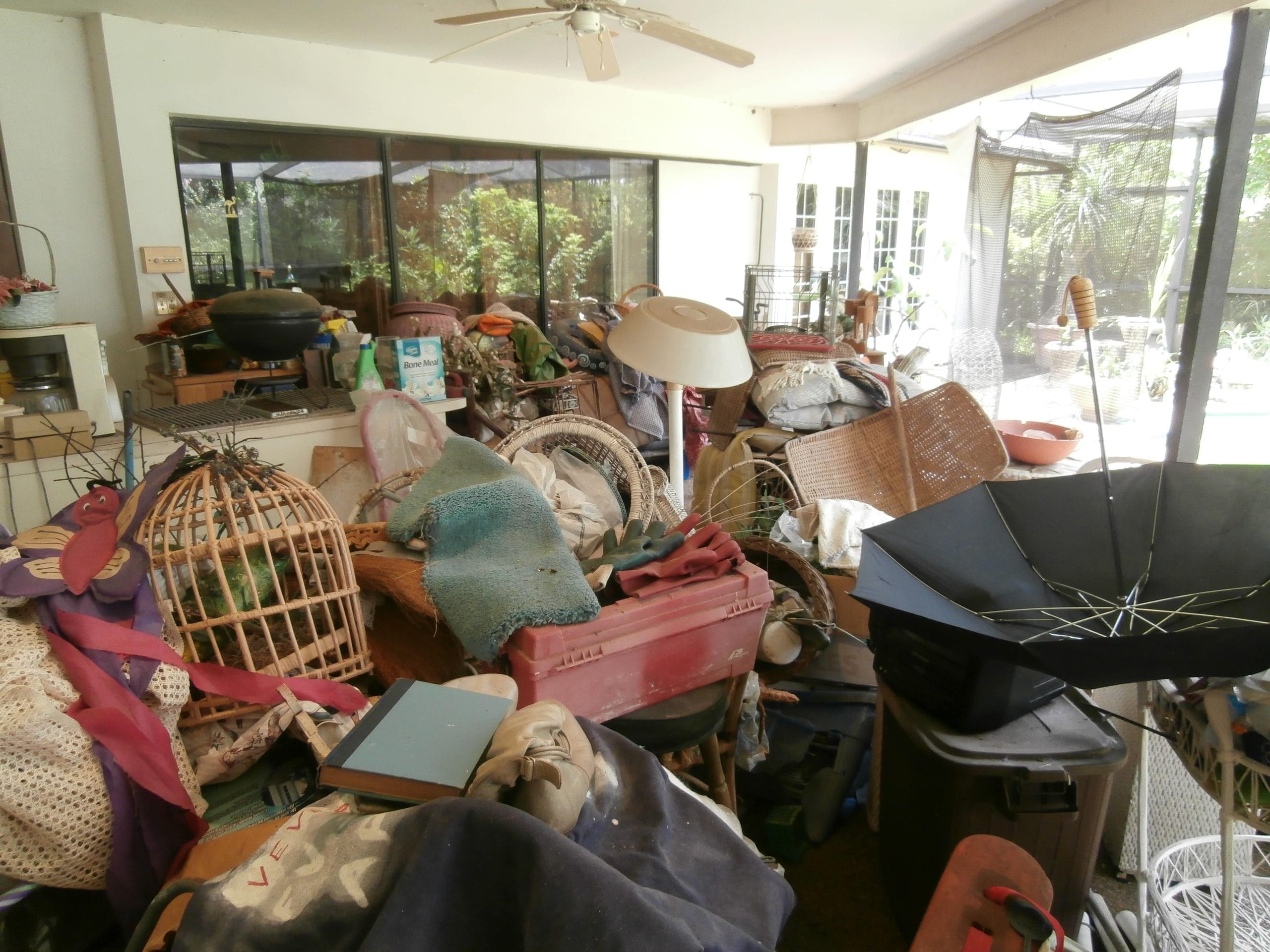Understanding Level 2 Hoarding
Hoarding is a complex disorder characterized by an overwhelming need to accumulate items, often leading to unsafe and unsanitary living conditions. The Clutter-Hoarding Scale, developed by the Institute of Challenging Disorganization, classifies hoarding behavior into five levels, ranging from mild clutter to extreme hoarding.
Level 2 Hoarding is the second least severe category on this scale. At this stage, hoarders begin to experience noticeable clutter, difficulty in maintaining cleanliness, and early signs of isolation due to embarrassment about their living conditions.
Did you know? Hoarding disorder affects nearly 2-6% of the U.S. population, with most cases escalating over time without intervention.
What is Level 2 Hoarding?
Wondering how to recognize if a hoard has escalated to Level 2?
Here are the key indicators:
- The clutter in the hoarder house is visible
- Difficulty cleaning due to accumulated items
- Messy kitchens and bathrooms
- At least one blocked exit
- Excessive accumulation of garbage
- Early signs of pest infestations
- The hoarder is starting to self-isolate
- Pet dander and pet excrement are in the hoarded home
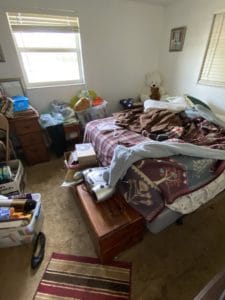
Remember: A person doesn’t need to display all these signs to be classified as a Level 2 hoarder. Even a few symptoms indicate it may be time for professional assistance.
Key Indicators of Level 2 Hoarding
The Clutter in the Hoarder House is Visible
In a level 2 hoard, garbage, objects, and collections may be spilling out of overfilled storage areas and covering surfaces in the house. However, some of the floor is typically still visible. The hoarder usually does not recognize this clutter as a problem because they do not see it as excessively messy.
At this level, the hoarder is openly fixated on accumulating more objects. A collection of receipts may be piled on a table, clothing could be swamping a bed, and book boxes may block pathways. Property owners that enter the space may become distressed, and a level 2 hoarder begins becoming at risk of eviction.
Common Signs:
- Items such as receipts, clothing, and books may block pathways.
- Guests and property owners might feel discomfort entering the home.
- The hoarder does not perceive their space as excessively messy.
Quick Tip: If clutter is beginning to accumulate, encourage sorting one area at a time to prevent further escalation.
It is Becoming Difficult to Clean the Hoarded Home
The clutter that exists in the hoarder’s house begins making housekeeping difficult. Because there are objects and other hoarded items in the way, it is not easy to clean surfaces. Collections are becoming disorganized because of a lack of space, although sometimes the hoarder still thinks they are adequately displayed and may still try to show them off to visitors.
Level 2 hoarders begin to misplace items because it is buried in other stuff. The fridge becomes overstuffed, and expired items litter the stockpile. Dishes are usually piled up in the sink and on countertops, making the surfaces unusable.
Odors will exist, but they are not overwhelming and are still isolated to specific areas, like near the counters and sink in the kitchen covered in dirty dishes.
Common Signs:
- Items become buried and misplaced within the clutter.
- The refrigerator is overstuffed, often containing expired food.
- Dishes pile up in sinks and on countertops, rendering them unusable.
- Odors begin to develop but remain localized to specific areas.
Quick Tip: Implement daily decluttering habits and introduce organizational systems to maintain hygiene.
The Kitchen and Bathrooms Are Messy
These essential areas start showing visible hygiene issues. A light amount of mildew will be present on tiled surfaces, specifically in the bathrooms and kitchen. Bath and hygiene products will cover most of the characters in a bathroom, and dirty dishes and other gadgets will block all the kitchen space.
All storage areas are at capacity. Some major plumbing or appliances may have stopped working, but the amount of stuff is too overwhelming to get them fixed. Grout is usually filthy, and any backsplashes will be covered in grime.
Common Signs:
- Mildew buildup in bathrooms and on kitchen surfaces.
- Dirty grout and grease-covered backsplashes.
- Overwhelmed storage areas with excessive personal care and cleaning products.
- Malfunctioning plumbing or appliances due to lack of maintenance.
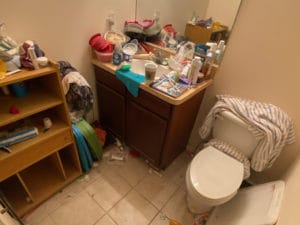
Quick Tip: Encourage professional cleaning assistance if home maintenance becomes too overwhelming.
There is a Blocked Exit from the Hoarder House
The hoarder’s possessions are now blocking an exit in the home, which is the first real sign of danger in the hoarder’s behavior. Since the hoarder will not be able to leave the house if needed from that room specifically, they may get trapped in a fire, flood, or another disaster that requires them to use that door.
While there is one blocked exit to the home, the collection causing the hoarding is not yet considered a code violation, so the hoarder is at minor risk of being ordered by authorities to clean up. Entire rooms are not blocked off; however, pathways around clutter in the house may be forming.
Quick Tip: Prioritize clearing escape routes first during cleanup efforts.
There Is an Excessive Accumulation of Garbage
Overflowing garbage cans, rotting food, and unsanitary conditions may become noticeable. At this stage, pest populations begin to form.
Various garbage cans around the home are overflowing. Garbage may start accumulating in the yard or on porches. There may be a few dirty dishes and rotting food containers near beds and in other unusual spots, and paper and other thin items may cover the entire floor.
Bugs and other vermin may have recognized that a food source exists within the house. It is common to deal with pest situations while cleaning up excessive trash.
Warning Signs:
- Piles of trash inside and outside the home.
- Rotten food containers in unusual locations.
- The presence of ants, cockroaches, or rodents.
Quick Tip: Regular waste disposal and pest control can help prevent infestations from worsening.
Pest Populations Are Beginning to Form
There may be a noticeable number of cockroaches or ants in many spots in the home, and there may be signs of rodents, although a live one cannot be spotted.
Rat and mice feces may be on carpets, objects, and surfaces, although the mess has not started to stink on its own yet.
The Hoarder is Starting to Self-Isolate
The hoarder begins choosing to stay at home with their hoard more often than they did before. They start to limit the number of visitors into their cluttered space due to light shame and embarrassment.
If an underlying mental illness is diagnosed at this point, the escalation of a mess into a level 2 hoarding situation may be a sign of medication noncompliance. It is prudent at this point for a professional therapist or psychologist to check in with the patient to make sure their mental health is stabilized.
Key Signs:
- A hoarder prefers staying at home rather than engaging in social activities.
- They deflect invitations or find excuses not to host guests.
- If they have an underlying mental illness, worsening clutter may indicate medication noncompliance.
Quick Tip: Check in regularly with your loved one. A compassionate approach is key to encouraging help.
Pet Dander and Pet Excrement are in the Hoarded Home
There is not so much pet waste lying around that the entire home smells like it. However, there are too many areas where visible urine and feces are on the floor or other surfaces. Reptile setups, fish tanks, and rodent cages are visibly unkempt.
Pet dander is on most surfaces in excessive quantities and will exist on most fabrics. The hoarder and all their clothing will be covered in hair if they own cats or dogs.
Warning Signs:
- Unkempt pet enclosures (cages, tanks, litter boxes, etc.)
- Visible urine or feces in multiple areas
- Strong pet-related odors throughout the home
- The hoarder’s clothing is covered in pet hair
Quick Tip: Ensure regular vet checkups and proper pet care to prevent animal hoarding situations.
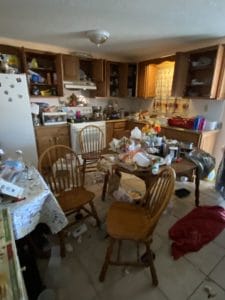
How to Help a Level 2 Hoarder?
Hoarding is a complicated disorder that affects friends, neighbors, bosses, and family. Usually, a hoarder’s disorder is a symptom of a mental illness. This is the most critical stage in seeking help for a hoarder. The hoard is also borderline manageable, so snipping it in the bud at this point will not require such drastic measures.
Steps to Help:
- Encourage gentle conversations – Avoid confrontation, as hoarders often feel defensive.
- Offer small decluttering goals – Starting with one area prevents feeling overwhelmed.
- Seek professional therapy – Mental health support can address underlying hoarding behaviors.
- Hire hoarding cleanup specialists – Trained professionals ensure safe and efficient cleanup.
Why Choose Spaulding Decon for Hoarding Cleanup?
At Spaulding Decon, we provide professionals to assist a hoarder in decluttering. Professionals may need to wear PPE (Personal Protective Equipment) in level 2 situations if there is a need to remove hoarded garbage or waste materials from a home.
At Spaulding Decon, our trained biohazard remediation professionals know how to clean up a hoarder’s home, and we understand the emotional attachment that exists to the belongings. Our teams can create custom cleanup plans while working with mental health professionals to ensure that your loved ones get the help and support they need during the arduous cleanup process.
Need Immediate Help? Call 866-726-2316 for Professional Hoarding Cleanup Services.
Take Action Today!
Level 2 hoarding is manageable if addressed early. If left unaddressed, Level 2 hoarding can escalate to Level 3 Hoarding, where health hazards and structural issues become more severe.
- Recognize the warning signs.
- Start small – declutter one area at a time.
- Seek professional help before it worsens.
To find a Spaulding Decon team nearest to your location: Spaulding Decon Locations | Professional Cleanup Company
